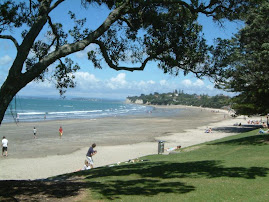For me, this discovery exercise has clarified what bookmarks and tags are all about. I have long known how to add a site to ‘Favorites’ but never really understood the difference between that and bookmarking. Favorites enables an instant link to a webpage - useful for sites visited regularly (post code finder, bank, on-line campus, etc.), whereas bookmarking allows you to maintain access to a site and, at the same time, identify with a tag what is relevant to you about that site. I even now know what a ‘tag cloud’ is – how technical’s that!
Being able to access your bookmarks from any computer has to have many advantages, particularly for students who work sometimes on a home pc, sometimes at school/uni. One benefit for me is being able to bookmark a site to show others. Take a look at this site of Deidre Copeland’s, for instance. She is a very talented New Zealand artist who does the most amazing portraits; they’re huge but so life-like!
http://www.dee-art-space.com/Site/Home.html I first saw some of Deidre’s work featured in a magazine and later viewed many more portraits on her website. Unfortunately, I am hopeless at remembering names and couldn’t find the site again when I was telling someone else about her. Since discovering Delicious, I've searched again, eventually found her site and bookmarked it. Now I can simply check my bookmarks and
voila there she is!
It is interesting to see how many people have bookmarked the same site and the various tags they have ascribed to it. Few had left comments against the bookmarks I looked at. While being able to share information can have huge benefits, I do wonder whether it makes research too easy for students, particularly school students, who really need to learn the processes involved in searching for and assessing the worth of information obtained electronically.







 Takapuna Time
Takapuna Time
